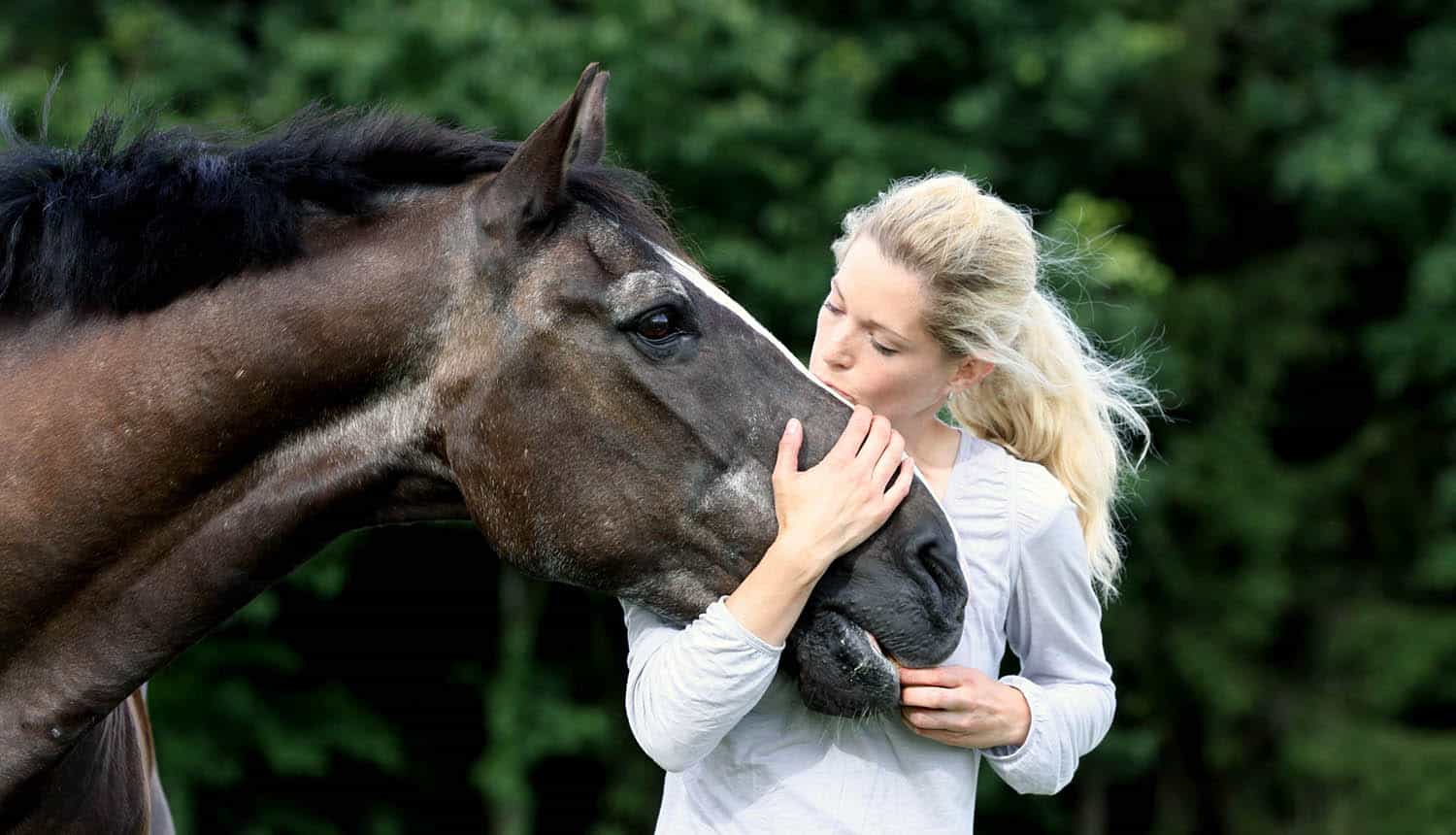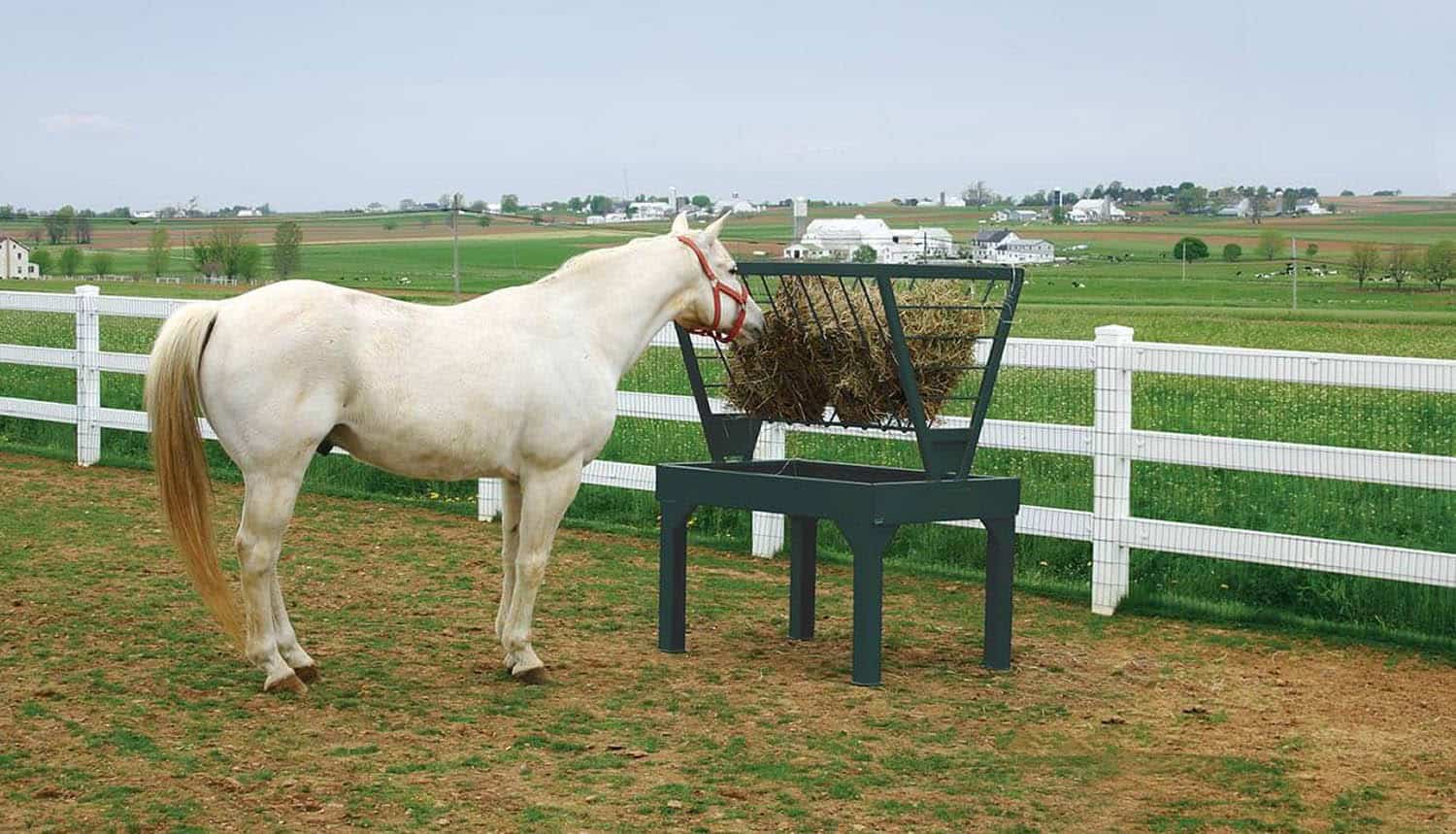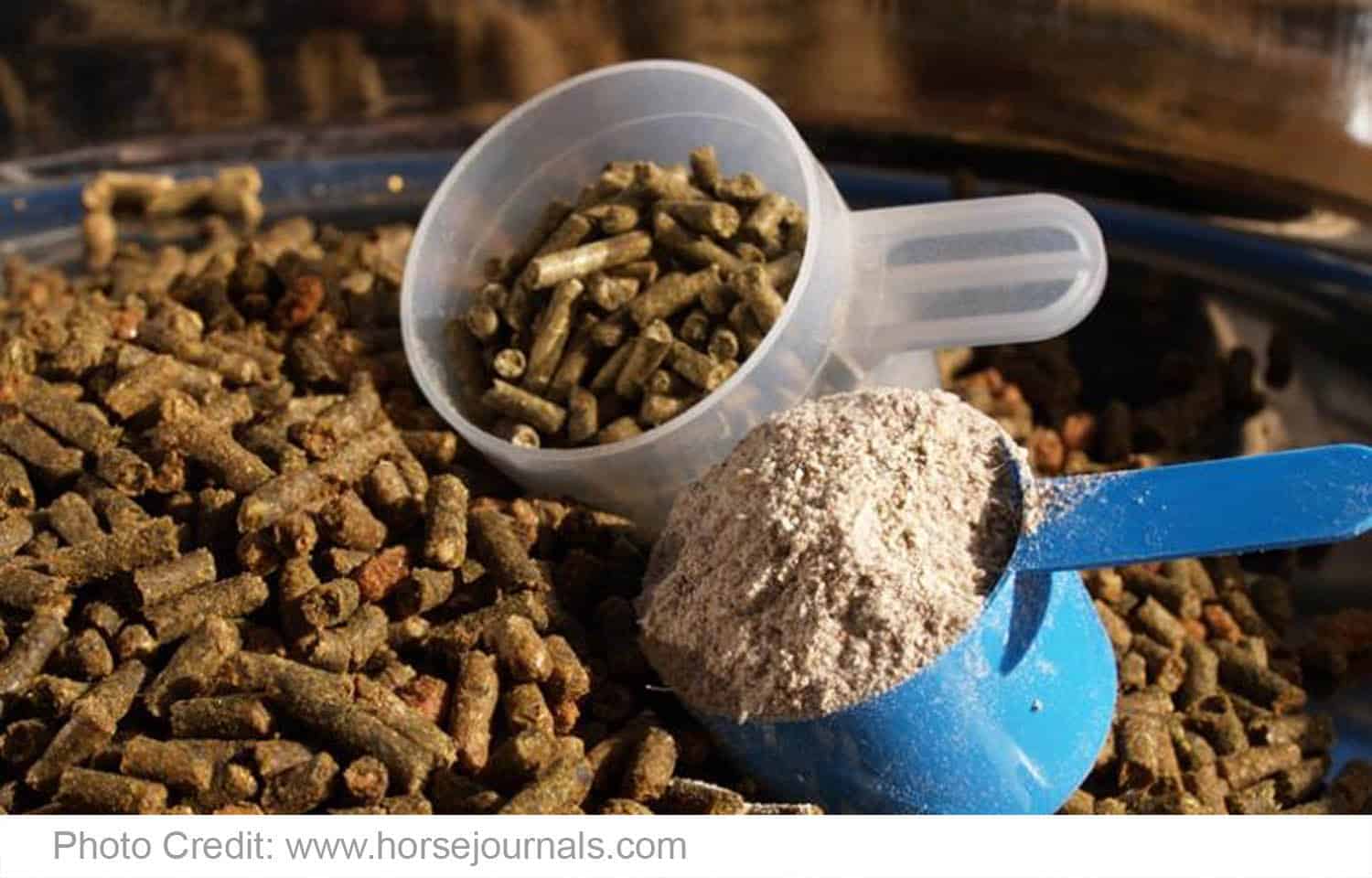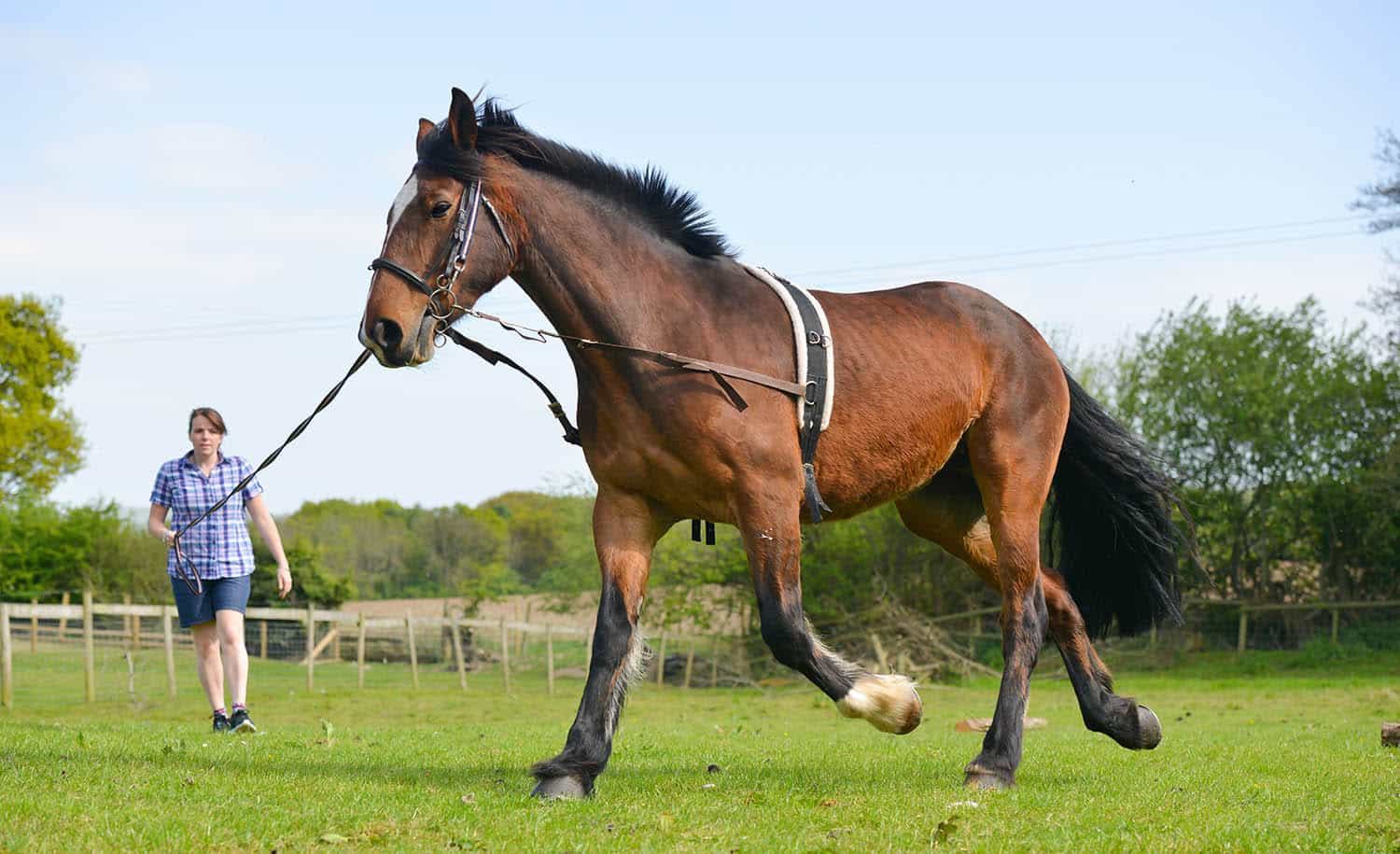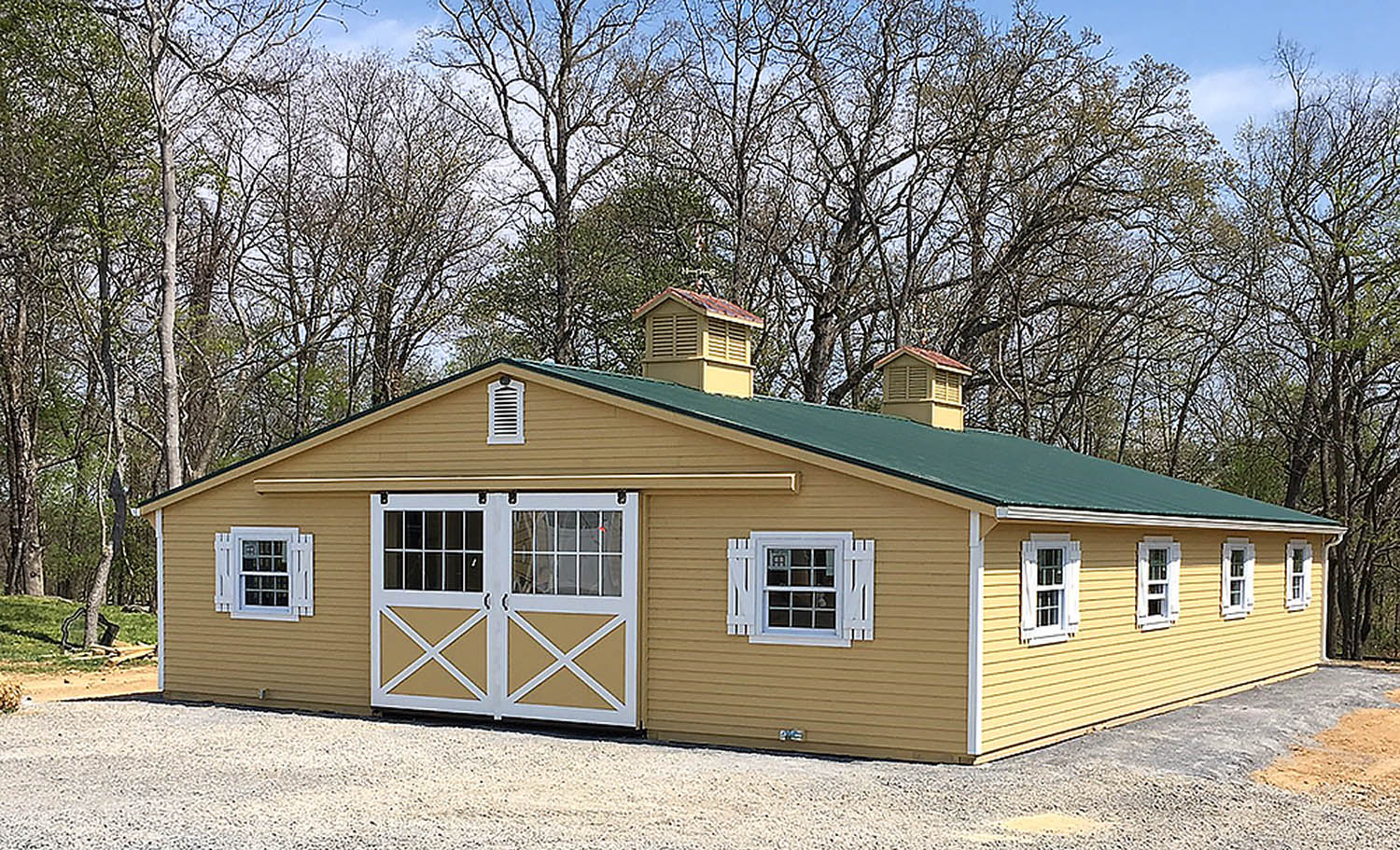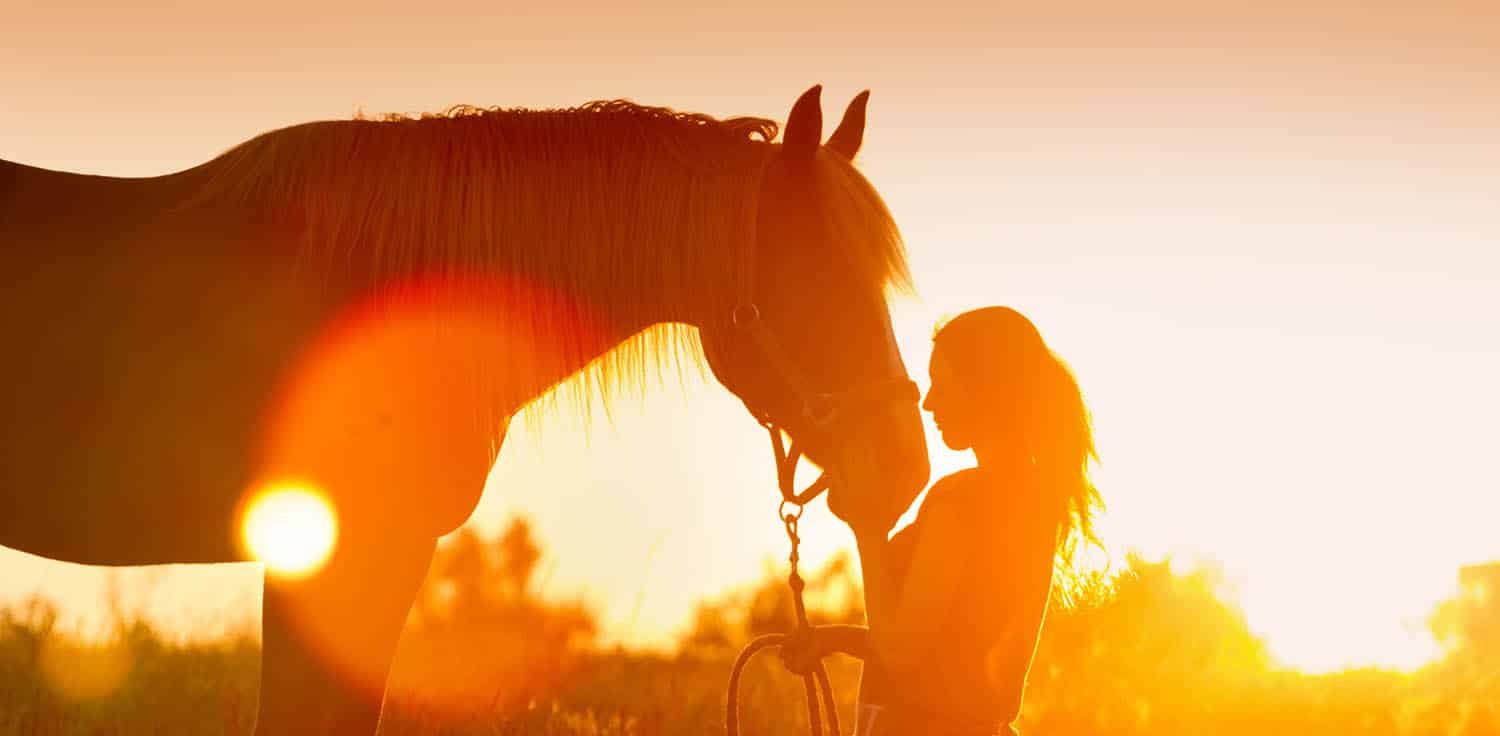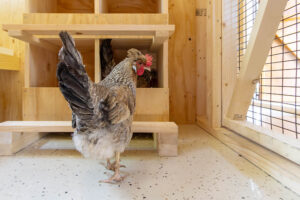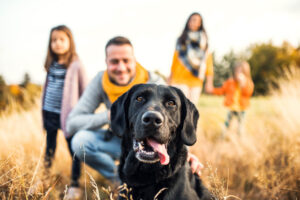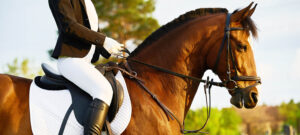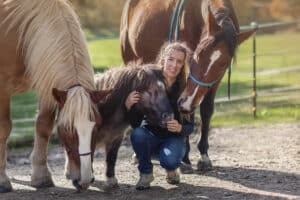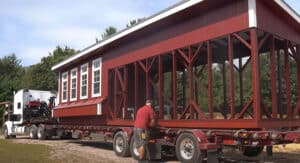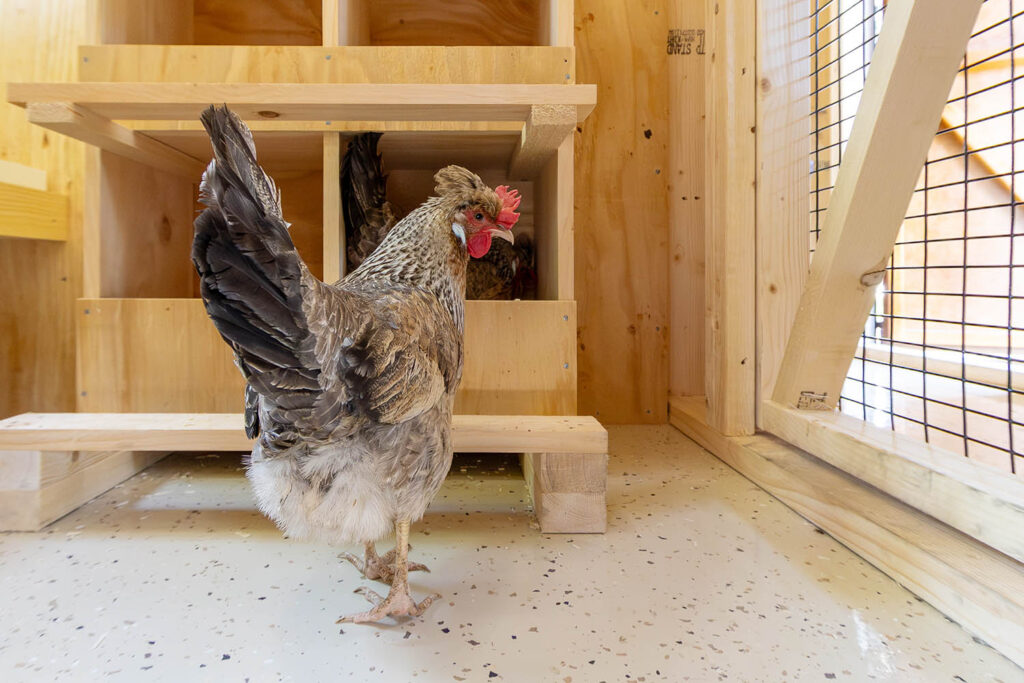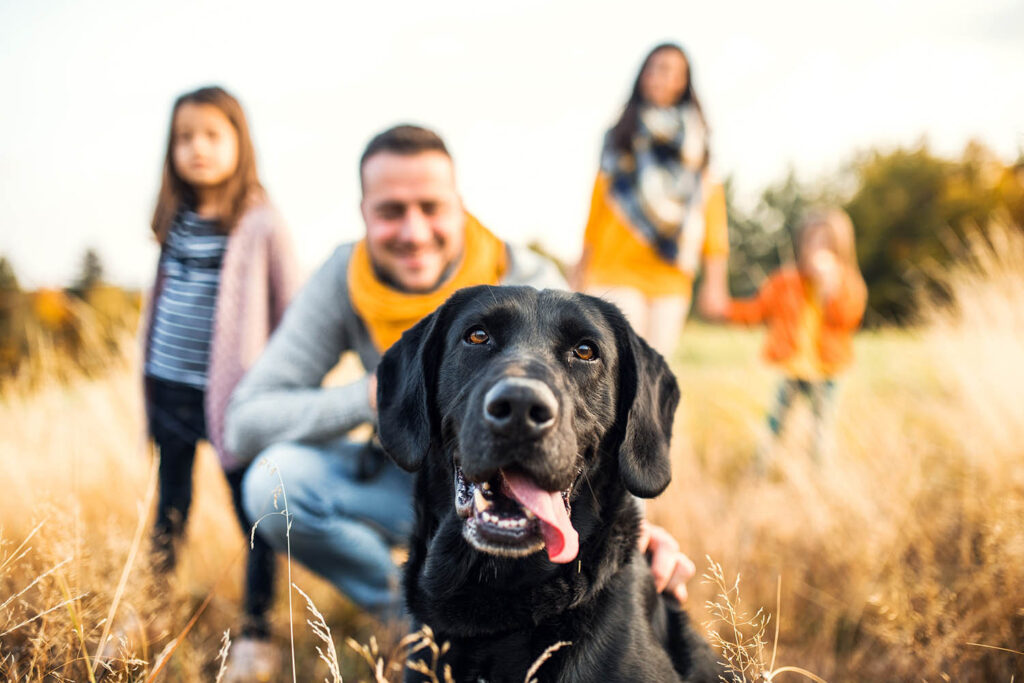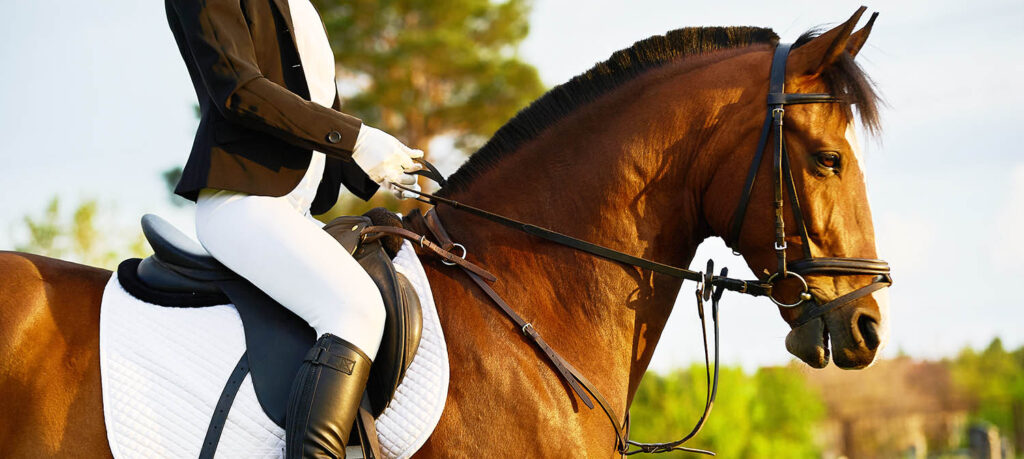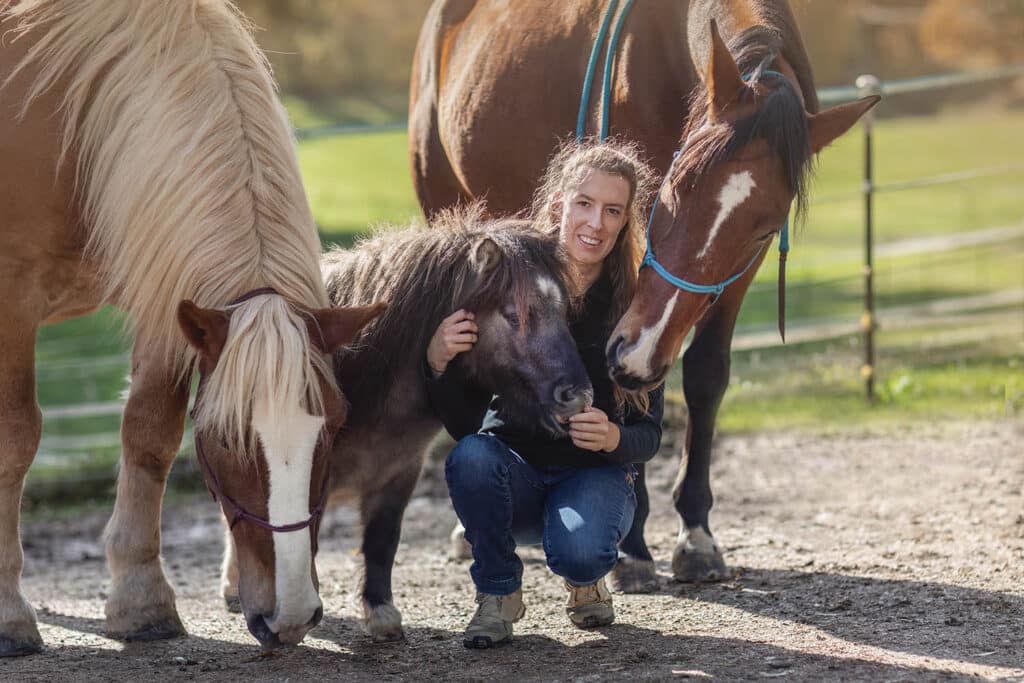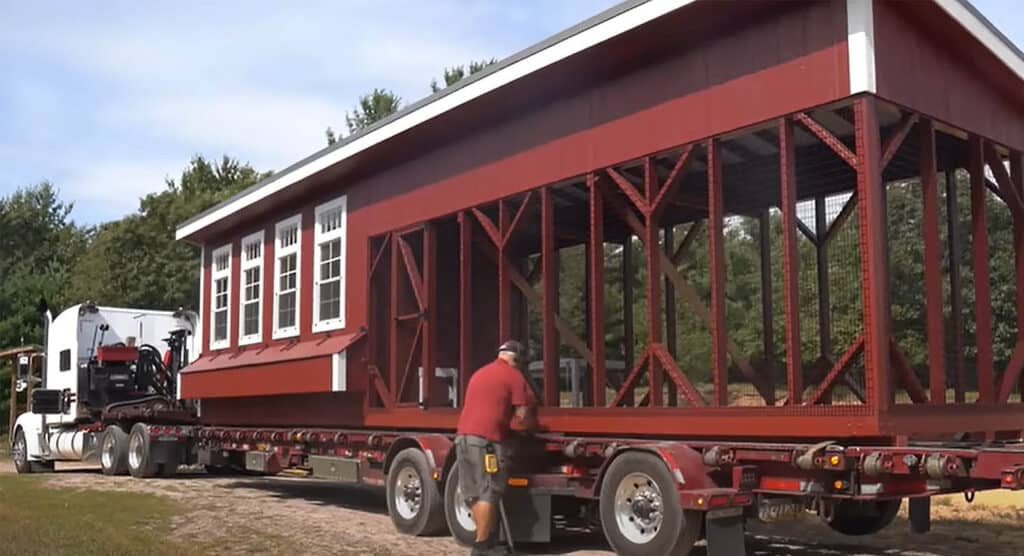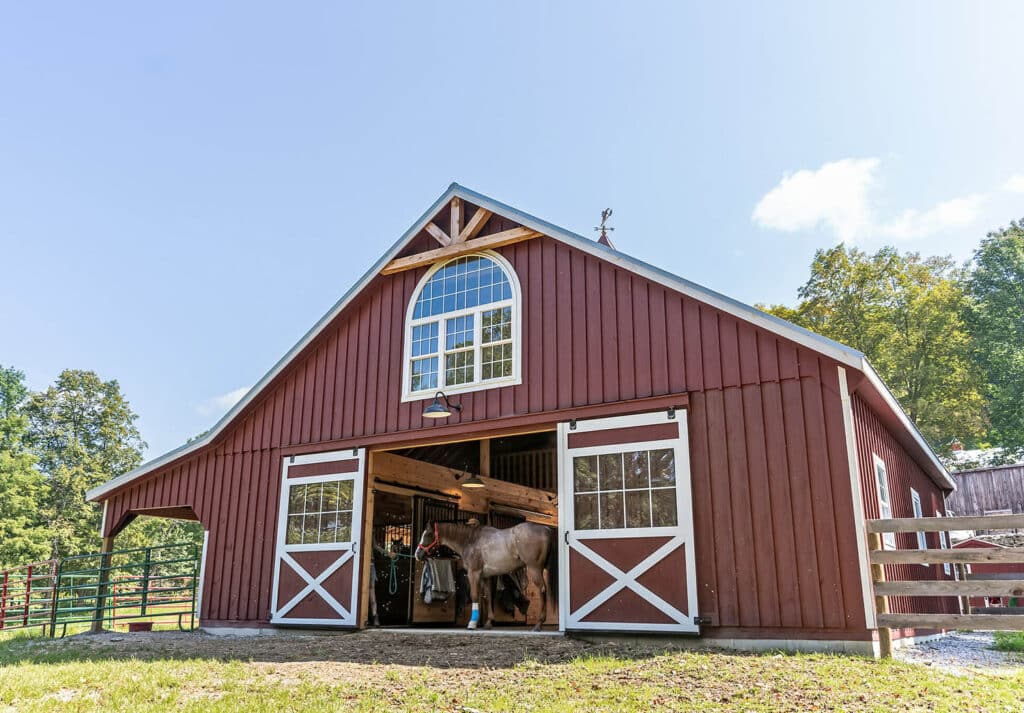Senior horses deserve and appreciate special care and attention. Just like their vintage human counterparts, the key to helping them enjoy a good quality of life in retirement is to pay attention to helping them to stay healthy. To accomplish this task, you may need to adjust some horse care routines. But which ones and how? Take a look.
Moving With the Times
Common ailments in vintage horses include respiratory issues, metabolic disorders and arthritis and basic management techniques can also go a long way to mitigating the effects of these issues.
Freedom of movement is an essential component to the mental as well as physical health of all horses. Provision of Dutch doors on the exterior wall of a stall that exit to a turnout paddock or dry lot offers the resident equine an opportunity to choose for himself where he prefers to be in any weather.
Gentle exercise is important in helping horses’ mental health as well as aiding in keeping joints lubricated and lessening the effects /speed of decay related to arthritis. Similarly exercise helps horses with metabolic disorders from becoming overweight, often a key causative factor in these diseases and helps keep the digestive tract moving – a huge plus.
The overhang area of a barn also provides a handy in/out space for the horse to enjoy. If you are building new, including an overhang in the design is a relatively inexpensive way to add shelter and storage options to a building.
Horses can be encouraged to spend time in the fresh air, away from shavings or other bedding that may irritate respiratory passageways, by offering a high-quality forage source outside in an equine hay feeder. Not only does a hay feeder save money with less wastage of hay supplies, but its use also encourages healthier eating habits because it slows down the pace of ingestion. If you select a model with a roof, it also protects the hay from becoming wet or moldy. Another bonus of using an equine hay feeder is it prevents the forage becoming manure infused. It also keeps any hay detritus such as dust and seeds out of the confined stable area where there is less passive airflow. This is very helpful for horses with respiratory issues.
Note: Be certain to use a hay feeder designed specifically for horses to avoid injury and accidents that cattle feeders can inflict on equines.
Provision of more turnout time and space for horses is helpful for both their mental and physical well-being too. And if the option exists to offer free range on well-managed pastures, then as long as there is some form of shelter such as a carefully placed and sized run-in shed, the horse can enjoy more freedom.
Nutrition Matters
A balanced diet for the senior horse is not attained by simply switching the feed bag to a grain mix designed for ‘senior’ horses. Proper nutrition is a major component to good health. Horses were never designed to eat grain of course. The addition of a high-quality equine feed supplement can help support the well-being of the horse’s microbiome and can help defray the likelihood of issues with ulcers and hind gut acidosis.
Assess your pastures and hay or other dry forage each year so you know what the horse is actually eating. Try to avoid forage treated with chemicals and preservatives as these may cause inflammatory and skin issues, especially in animals with weakened immune systems or prone to inflammatory metabolic disorders. Check the product labels for duplication of components on grain and supplements and look for stabilized high-quality ingredients and formulations. It pays to be educated on the horse’s digestive process if you want to choose the right products to feed to keep a horse happy and healthy.
To help optimize equine gut health it is a great idea to feed smaller more frequent meals to the horse than one or two a day. If it is practical, consider adding a midday meal.
Fecal worm counts and deworming, dental and hoof care should be on the schedule for all horses, but most especially for the older horse who is likely to have more issues due to the infirmities and exposures of old age.
Avoid Home Alone
As we all know horses are herd critters, so be certain to provide companionship in some form. That might be a donkey, mule, miniature horse or another horse. It could also be a goat or two, or another animal. Social activity is an important cognitive stimulation for all mammals including horses.
It is kinder to allow a senior horse to enjoy same or similar company once you’ve found a good companionship program than to keep endlessly switching things about, as re-establishing the pecking order in a relationship can add unnecessary stress to the older horse’s life. For example, try not to use the older horse simply as a babysitter for rambunctious youngsters that are switched for turned out periods throughout the day while the senior equine is the mainstay occupant of a paddock.
Comfort in Routine and Environment
As we age, we all appreciate the benefits of following a routine. Mealtimes that are kept on schedule help to keep our digestive processes optimized and aids in keeping our glucose and other metabolite levels balanced (given the diet is composed appropriately for the individual’s specific needs). Similarly, horses appreciate routines as they help assuage any fears of food deprivation or worry of changes in the herd’s care dynamic. Even changes in who feeds and handles the horse can be a stressor for some animals.
New environments can often cause stress for older horses, who may have impaired senses such as vision loss or simply feel more vulnerable due to their age. Try and minimize lifestyle changes and environments where possible.
Exercise Options
Riding is great way to exercise your horse if your equine partner can manage it without pain or discomfort. A horse that has enjoyed the companionship and interactive experience of being ridden will always welcome the continued experienced, though it may need to be conducted at a slower pace or lesser level.
Other exercise options include free longing, long lining (which is kinder on the equine joints that longing on a circle), ponying from another horse and hand walking. Being hand-grazed is a wonderful pastime for any horse, who can feel secure with his person on the end of the rope while experiencing some fresh herbs or grass outside of the regular pasture.
Regular grooming of the horse is also a very beneficial endeavor as it helps to maintain his muscle tone while providing a bonding experience. It is also an opportunity to check over the horse’s physical health points such as picking out hooves to check frog health, identifying and treating any superficial wounds, swellings or injuries. Additionally, any changes in the mental health of the horse can also be ascertained.
Thermoregulation Concerns
It is important to manage the environment for senior horses in the same way you would for a foal or young horse. The two ends of the age spectrum both invite problems with body temperature management, as thermoregulation is more difficult to optimize for the very young and the older mammal.
Blanketing or sheeting a horse may not be necessary in general circumstances if the equine has shelter from hard rain/snow blizzards and hot sun. But keep the ‘weather eye’ on the older horse who may not cope as well with extremes of temperature, inclement weather or adverse environmental conditions such as high winds in bitterly cold weather or extreme heat and (in particular) humidity.
When building a new barn consider including plenty of electrical outlets for attaching commercial grade fans (motors on commercial fans are sealed which helps mitigate the risk of dust infiltrating the motors which can cause fires). Incorporating cupolas and passive or mechanical exhaust fans can help with temperature and moisture management in a building.
Also consider installation of rubber matting in stalls to improve the comfort level of the equine residents. It makes it safer for older critters to get up and down and helps protect their joints from the impact and dampness of a dirt or concrete floor.
When The Time Comes – And It Will
It is an honor to be able to keep a senior horse through its golden years. Most especially if he has given you a part or all of his life as an active partner. Now is not the time to give him up.
But the time will come when you have to show him the greatest kindness and make the difficult decision that it is time for euthanasia. The definition of the word comes from the Greek words “eu” (good) and “thanatos” (death), but that does not make it an easy decision.
The reality is that aging up is a good thing when you consider the alternative. And every day a blessing. When you take steps to maintain your horse’s well-being you are making decisions for him that he is obviously unable to make for himself. Take comfort in knowing that you have done the best by him.


